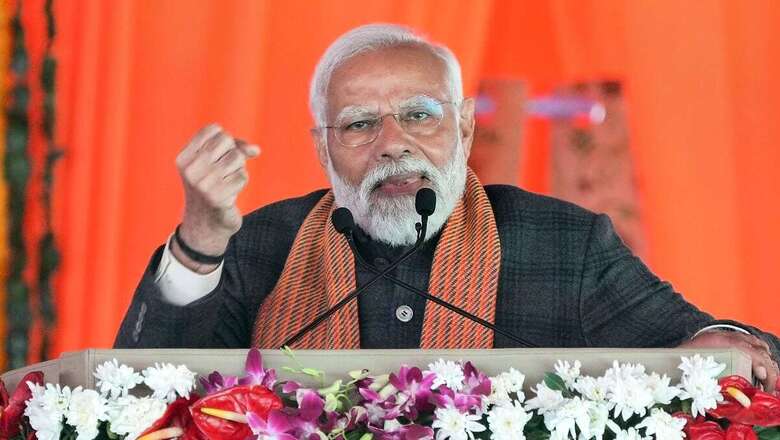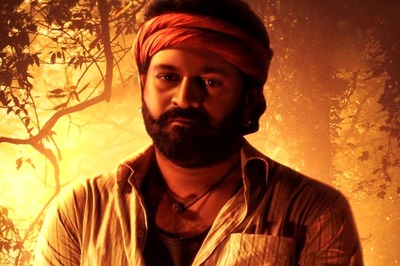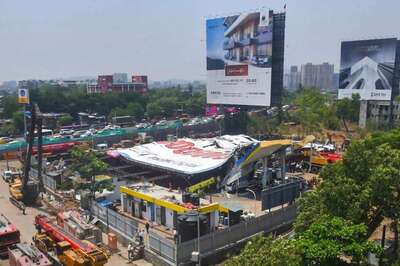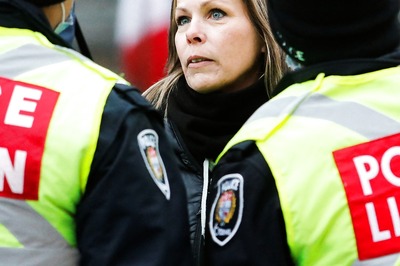
views
Days after visiting Jammu, Prime Minister Narendra Modi on Thursday reached Kashmir’s Srinagar where he took part in the ‘Viksit Bharat, Viksit Jammu Kashmir’ initiative. While he also inaugurated and dedicated multiple development projects worth Rs 6,400 crore, his political and non-political messaging was apparent beyond the usual pleasantries, waving of hands, and reaching out to the people of Kashmir.
Here are five big messages from the prime minister’s trip to the Valley:
‘Article 370 anti-development, pro-discrimination’
Prime Minister Modi suggested that Article 370, which was abrogated on August 5, 2019, was anti-Kashmiri while saying it only benefited “few families”, referring to the Abdullahs and Muftis who have ruled Jammu and Kashmir for long. Linking it directly to discrimination, he said: “There was an era when law implemented in other parts of the country could not be implemented in Jammu and Kashmir; when schemes for the welfare of the poor were implemented across India, but our brothers and sisters of Jammu and Kashmir were deprived of the benefits. But look around, how the times have changed.”
The PM further cited how the scheduled castes and scheduled tribes of J&K were discriminated against due to Article 370. Wooing the largely young crowd, however, he also connected it to lack of development and how its removal has ushered in “naya Jammu and Kashmir”.
“The power of development, tourism possibilities, empowerment of farmers, and the leadership of the youth of Jammu and Kashmir, which is not just a region but the forehead of India. Viksit Jammu and Kashmir is the priority of Viksit Bharat,” said PM Modi. He reminded how Jammu has an AIIMS now while work on another in Srinagar is in progress. He also spoke about the IITs and IIMs in the union territory.
Modi repeatedly reminded how Article 370 worked as a roadblock to such a barrage of development. “For decades, for political gains, the Congress and its allies misled the people of Jammu and Kashmir in the name of [Article] 370 and misled the country,” he added.
‘Previous govts filled J&K bank with relatives’
While Modi’s take on Article 370 was something everyone was keen on listening to, he surprisingly stressed more on the alleged J&K bank scam in which big names – former chief minister Omar Abdullah and ex-finance minister Haseeb Drabu – surfaced. In 2022, Abdullah was also questioned by the Enforcement Directorate, though at the time he had said the agency did not accuse him of any wrongdoing.
The prime minister connected the scam to pariwarvad and said: “J&K has been a victim of pariwarvad and corruption. The previous governments left no stone unturned to destroy our J&K bank, by filling it with their relatives and nephews; these pariwarvadis have ruined the bank. Due to its mismanagement, the bank had incurred so much loss that all of you were in danger of losing thousands of crores…”
Giving specific figures of before and after, he also told the crowd about non-performing assets, deposits and the financial health of the bank, suggesting that it took the Modi-led government’s intervention to undo the damage.
‘Big celebrities coming to J&K’
Modi recounted the giant push his government has given and continues to give to tourism in J&K. Showing the UT’s leadership position in India’s tourism, he said: “Today, six projects have been dedicated to the country under the ‘Swadesh Darshan’ scheme. Apart from this, the next phase of ‘Swadesh Darshan’ has also been launched. Under this, at least 30 projects have been started for Jammu and Kashmir and other places in the country…”
The PM also reminded how visits to tourism spots in Kashmir, Amarnath and Vaishno Devi skyrocketed in 2023, breaking previous records. He also stressed on how the Valley is emerging as the winter sports capital of India. “More than 2 crore tourists have come here… Now big celebrities from across the world are also coming to J&K,” he added.
But, it was his ‘Wed in India’ idea that is still not formally marketed that made heads turn. Like ‘Make in India’, he said he will ask well-off families to ‘Wed in India’ rather than indulging in lavish weddings abroad; and what better place to wed than in Kashmir?
‘Dil jeetne aaya hun’
Ahead of his speech, Modi tried working his charm on the youth. While interacting with some of them, 285 blocks and 80 urban bodies of J&K were virtually connected with the prime minister. Small things like addressing Pulwama’s Nazim as ‘Nazim ji’ and dubbing his endeavour with bees and honey as “sweet revolution” brought a personal touch to the interaction.
Before that, he handed over some appointment letters and acknowledgments to the families of those who made the supreme sacrifice. The bottom line was simple: ‘Dil jeetne aaya hoon’.
“2014 ke baad jab bhi aaya maine yahi kaha, main ye mehnat aapka dil jeetne ke liye kar raha hoon. Aur main dino din ye dekh raha hoon ki main aapka dil jeetne ki disha me… sahi disha me jaa raha hoon. Aapka dil main jeet paya hoon, aur zyada jeetne ki koshish meri jaari rahegi (whenever I have come here since 2014, I have always said the hard work I am doing is to win your hearts. And I have been able to win your hearts, I am in the right direction. I will keep working towards winning your hearts),” he said.
‘Had opportunity to see Shankaracharya hill’
The association between Srinagar and Shankaracharya is age old. At the height of 1,000 feet and overlooking the city, Shankaracharya temple sits atop the Shankaracharya hill. Worshipped for centuries, it is dedicated to the Hindu deity Shiva while the structure is historically and traditionally considered the oldest temple in Kashmir.
In 2014, then CM Omar Abdullah reportedly said Shankaracharya hill has been known by “parallel names” and will be known by these names in the future as well. “There have always been parallel names for Shankaracharya hill and always will be,” he had been quoted as saying. Though in the backdrop of the growing clamour for a renaming, he dismissed such ideas as many in the Valley have tried to call it Takht-e-Sulaiman.
“There is no, I repeat, no proposal by the state to change the name of Shankaracharya hill in Srinagar,” Abdullah had clarified then.
The PM, however, put all controversy to rest when he posed in the backdrop of the Shankacharya hill. He offered his reverence to the temple and later posted on X: “Upon reaching Srinagar a short while ago, had the opportunity to see the majestic Shankaracharya hill from a distance.” He also ended his speech by wishing all a ‘Happy Shivaratri’.



















Comments
0 comment